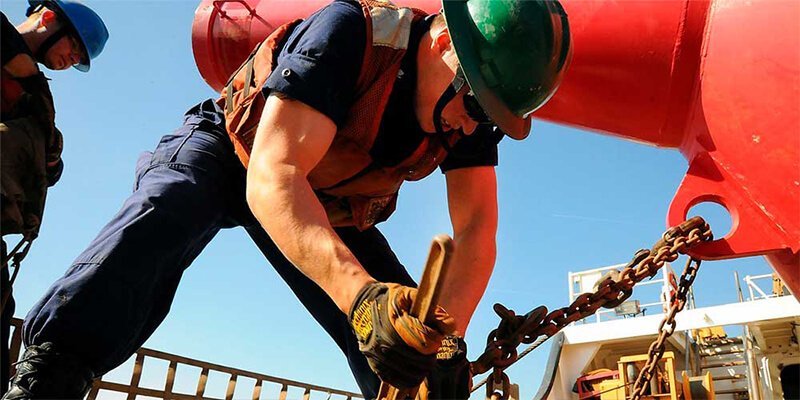In all organizations, one of the biggest concerns, without a doubt, is the acquisition of personal protective equipment, also called PPE, for its employees.
“Helmets, glasses, gloves or boots are some of the most frequently used protective equipment, although there are many more.”
If this equipment is not used or misused, it can cause serious accidents, some of which can even result in serious injuries or death.
It’s essential that employees understand the importance of wearing personal protective equipment.

What is personal protective equipment?
Personal protective equipment (PPE) is composed by any element, held or worn by personnel, that protects them against work related risks. Here are some of the most common PPE:
- Safety helmets
- Gloves
- Respiratory masks
- Face screens
- Protective glasses
- Safety footwear
- Safety harnesses

What is NOT considered to be personal protective equipment?
We don’t consider the following to be PPE:
- Ordinary everyday work clothes
- Life-saving equipment
- Risk detection devices
- Police protection equipment
- Self-defense equipment, sports equipment or protective equipment in vehicles
What is the purpose of personal protective equipment?
Personal protection is intended to create a barrier between the potential risks and the employee by using the equipment.
Therefore, it doesn’t eliminate the risk 100%, since the preventive function is limited. In the event that we decide to use PPE, we must choose the correct and appropriate equipment, to avoid any discomfort and to protect adequately.
Likewise, a plan to implement personal protective equipment and monitoring its compliance among employees must be created.

What must be done when there’s a potential risk to the health and safety of employees?
PPE should be used when risks are not sufficiently reduces by collective protection measures, hazards cannot be prevented, or changes to action protocols cannot be made.
When there is a risk, these measures must be taken, in the following order:
- Avoid the risk (change noisy machinery)
- Control the risk (use industrial enclosures that stop noise)
- Protect the person (buy hearing protectors)

This is the protection protocol stipulated by the law for employers to fulfill their role of prevent occupational hazards.
“IMPORTANT!: Collective protection measures must take priority over personal protection measures.”
Difference between PPE and CPE
The first is an INDIVIDUAL protection and the second is a COLLECTIVE protection.
Collective protective equipment allows one or more workers to be protected and isn’t used or in contact with individual’s bodies, while personal protective equipment is placed on each and every employee’s body.
From this we can deduce that collective protection equipment is designed to eliminate risks and individual protection equipment protects against risks, in the event that, unfortunately, they may happen.
Industrial safety signage is a good example of collective protection.

Aspects to consider when purchasing PPE
These are the things to consider when buying PPE for your employees.
# CE marked
All personal protective equipment must have the CE marking, legibly and visibly, during the equipment’s useful life. However, if this is not possible, it must be on it’s packaging.

#Information brochure
In addition to the CE marking, the manufacturer has to supply a brochure containing information about the manufacturer, as well as other information on:
- Complementary accessories for the PPE
- Limits and instructions for its use
- Expiry date
- Instructions on storage, disinfection, cleaning, inspection and maintenance.
The brochure must be written in an understandable and precise way.
Most common types of personal protective equipment
These are the most common types of personal protective equipment when wanting to guarantee workers safety.
Let’s go from top to bottom.
Helmets
Helmets help prevent head injuries. They must adapt to working conditions and be resistant. Currently, there are many models on the market.

Safety glasses
Eyes are the most delicate part of our body. Every day, 600 people in the world suffer from eye injuries at work. Thanks to good protective glasses, these injuries could be avoided.
It must be said that glasses also protect eyes from infrared radiation or very bright lights.

Earplugs or earmuffs
Do you work in an environment with too much noise around you? In that case, hearing protection becomes essential. Earplugs are really comfortable, but earmuffs are easier to put on and take off.

Face masks
Wearing a mask, when you’re in contact with hazardous materials, must be self-imposed.
“15% of workers in the European Union inhale dust, smoke or fumes at work.”
There are many masks that offer protection against dust and other particles. These masks are not like the masks we have been wearing to avoid the coronavirus. These masks cover the entire face, adhering to it, and protecting both the nose and mouth from harmful contamination.

Protective gloves
Hands and fingers suffer many from accidents, so they must also be protected. There are different types of protective gloves that can protect from the following:
- Chemical splashes
- Bacteriological risks
- Cold or hot
- Cuts
- Vibrations

Safety footwear
Feet also need protecting. There are safety shoes to protect our feet from heavy objects that may fall on them or with a non-slip sole for slippery floors.
16.2% of industrial accidents are caused by slipping or tripping, hence the importance of non-slip flooring.

Clothing
Good visibility is mandatory too. Therefore, wearing high visibility trousers or jackets can prevent accidents.

What are the different categories of PPE?
Personal protective equipment is classified into different categories, depending on the risk of the activities that are to be carried out. All the equipment must have a CE marking, regardless of its category.
PPE Category I
For low-risk activities. The equipment serves to preserve health and safety against small mechanical shocks or solar radiation (gloves, glasses, etc.).

PPE Category II
For medium/serious risk activities. Within this category we can find, for example, crampons, vented helmets, etc.

PPE Category III
For high-risk activities, activities that could be deadly. Equipment that protects the health and safety of the person to the maximum level.
Examples of PPE in this category: Boiler suits, carabiners, harnesses, etc.

Conclusions
Nowadays it’s impossible to talk about industrial safety without mentioning personal protective equipment.
PPE are only intended to protect workers from illness or injury derived from mechanical, electrical, physical, radiation, or chemical hazards.
“It’s mandatory for the company to know what risks its employees are exposed to and determine what PPE they should wear to ensure their safety.”
The use of personal protective equipment is not only the responsibility of the company, the employees also have to be trained on how to use them properly (know when it is necessary to use it, what type of PPE is needed, if the equipment requires cleaning, maintenance or replacement, etc.).

To ensure that work activities comply with all safety requirements (both collective and individual protection), it is necessary to designate a safety supervisor to control the proper use and maintenance of the PPE.
A company that promotes the use of personal protective equipment not only improves work environment and productivity, but it also protects its employees from very serious injuries.
Related link that may be of interest to you: Industrial Protections
References
These are the references we have used in writing this article:
- istas.net
- mutuauniversal.net
- tvh.com
- prevencionar.com.mx
- mbprevent.com
- petzl.com
- vestuariolaboral.com
- isastur.com
- amedirh.com.mx
